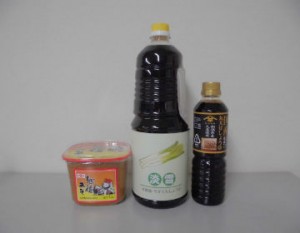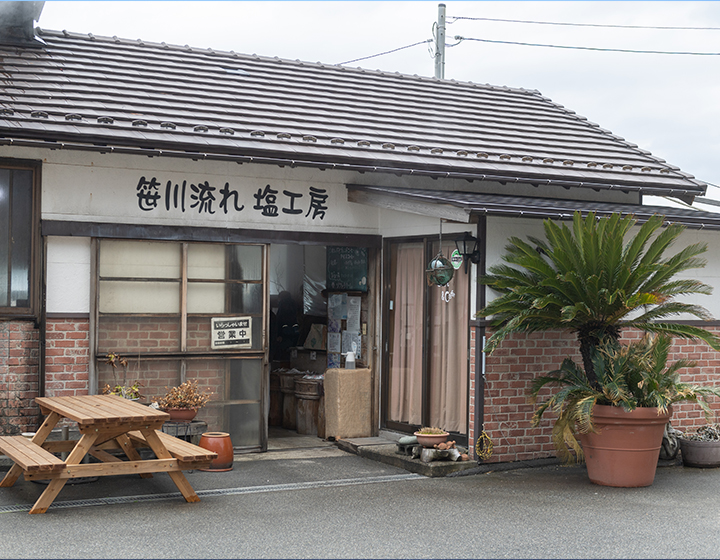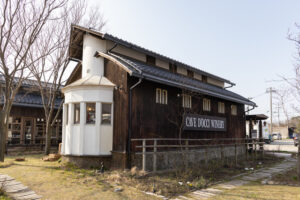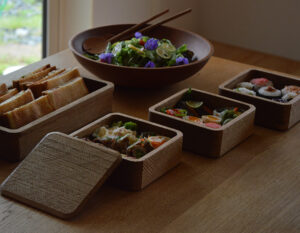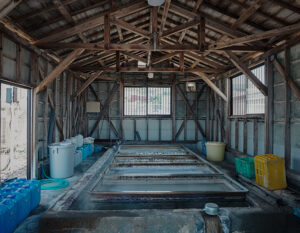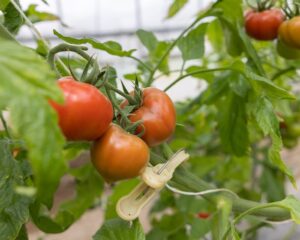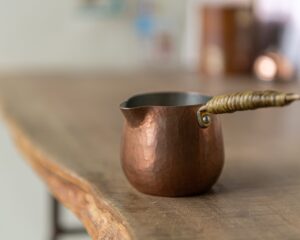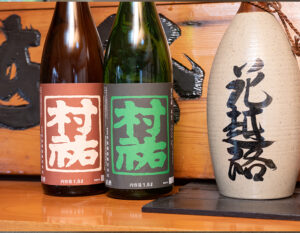At the northern tip of Niigata Prefecture, near the border with Yamagata Prefecture, there is a scenic spot called Sasagawa Nagare (Sasagawa Stream). The beautiful 11-km-long rocky coastline, named after the central village, has caves and rocks of unusual shapes in the shallows near the shore. It is also a place rich in nature, where rock oysters, turban shells, and many fish live. Mr. Hisashi Kobayashi of the ” Sasakawaryu Salt Studio ” uses the clear seawater of the Sasakawaryu Stream to make salt.
Careful salt making at “Sasakawaregawa-nagare,” utilizing the know-how of the time
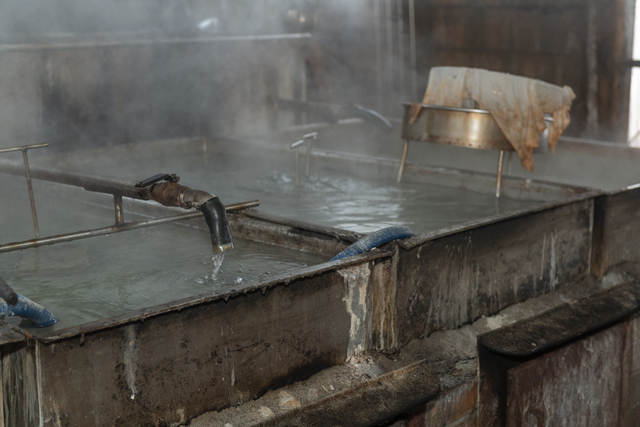
There are two main methods of salt production. One is to find rock salt in the soil, and the other is to extract salt from the sea or lakes by boiling it. In Japan, rock salt is not available and there are no salty lakes, so salt has long been produced using water from the sea, but salt production by pumping up seawater was very labor intensive and unproductive. However, salt production was not very productive due to the labor-intensive process of salt production. Around 1971, a new process was introduced to produce salt by electrolyzing seawater to extract sodium ions from the water and boiling it to produce a dense brine of at least 99.5%, which enabled a more efficient and stable supply of salt. In 1997, the monopoly system for salt in Japan, which had existed for more than 90 years, was abolished in response to the diverse needs of consumers for salt. This was the opportunity for Mr. Kobayashi to take up the challenge of salt production at his workshop, which is located right next to the Sea of Japan. Just before retiring from the construction company where he had worked for many years, he saw a TV program introducing people making salt and thought, “That sounds interesting. I thought, “This could be something I could do. Originally, salt was made from seawater in the area around Sasakawagare until before World War II. Although salt production in the area ceased when the monopoly system was introduced, the know-how from that time still remained.
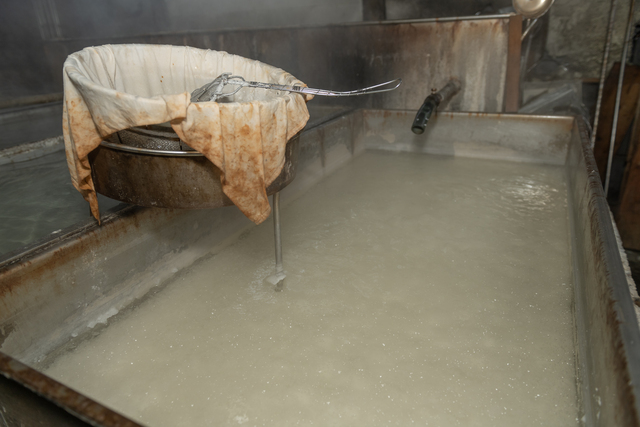
Although he started salt production with a light heart, thinking that he could do it himself, it was more difficult than he had imagined to make salt from seawater. In addition to the fact that seawater has a salt concentration of only 3%, it is difficult to produce salt from seawater by evaporating it in the sun all year round in Japan, where there is much rain and humidity. The only way to produce salt is to boil it down to extract the salt crystals, and only 18 kg can be obtained from 1,000 liters of seawater. Even so, Mr. Kobayashi insists on using a careful manufacturing method to produce a high-quality product. The Sasakawaryu River is naturally clear, but Mr. Kobayashi chooses particularly clear days to pump up the seawater. He then waits for sand and shells to settle in a tank, and filters the supernatant through a sarashi before pouring it into a salt cauldron. The temperature of the steam kettle is over 100 degrees Celsius. Wood is always kept burning, and the seawater is boiled down while carefully removing the lye. When the water is boiled down, it is transferred to the left and right kettles and boiled down again. Finally, the calcium sulfate, which is the source of the faint bitterness, is carefully removed. The resulting highly pure salt crystals are then poured into a conical device called a “bract,” which was made in the manner of the “warazuto” used in the past to wrap and transport food, and the bittern is removed. The process takes about 15 hours. This is the traditional way of making salt, using only natural ingredients.
What are the characteristics of “Sasagawa-nagare-no-salt”?

Compared to refined salt, the salt handmade from 100% seawater over a fire lit by firewood is rich in minerals and has no harshness or roughness, and the far-infrared rays from the firewood also help to produce a mild saltiness. The size of the crystals is another feature. Mr. Kobayashi produces four types of salt: Umi no Isoshio (salt from the Sasagawa Stream), Shio no Hana (flower of salt), Sasa no Shizuku, and Tamamoshio (seaweed salt). Umi no Isoshio” is a representative product of the workshop, made by carefully boiling down the seawater of the Sasagawa Stream over a long period of time in exactly the way described above. It has a mild taste with no bitterness and is just right for everyday use, and it goes well with any dish. Salt Flower is made by collecting salt crystals at a low temperature of about 60°C (140°F) for one day and night, and each grain is very large. The salt is used not only for seasoning, but also for toppings, and its texture and flavor accentuate your taste buds. Sasa-no Shizuku,” which is made by combining the powder of locally harvested Kumazasa bamboo, is characterized by its bright green color and fresh aroma, and is expected to have health and beauty benefits. We recommend topping vanilla ice cream and other sweet foods with it to enjoy the color. Especially popular is tamamo salt, which is made by boiling down the extract of hondawara (seaweed) with seawater. Rich in seaweed flavor and iodine, it enhances the taste of the ingredients. It goes well with onigiri (rice balls) and tempura, but a pinch added to soup will give it a flavor as if dashi had been added. Kobayashi is proud of the salt he carefully and painstakingly produces.
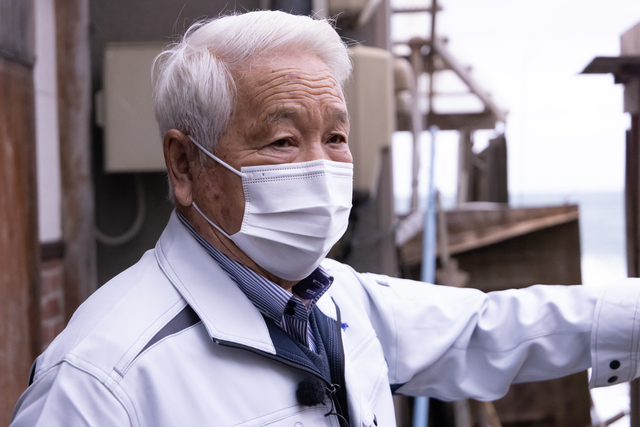
There is a terrace at the back of the salt factory and a cafeteria, Salt & Cafe, right next door. It is a popular stop for tourists visiting the area. In addition to coffee and drinks, visitors can enjoy “salt musubi (rice ball) sets” and “salt ice cream” made with salt from the Sasakawaryu River. The shop is only open from April to November, except during the rough winter months, but visitors can enjoy the panoramic view of the vast Sea of Japan and the natural seawater salt produced by Mr. Kobayashi.
Since ancient times, mankind has been making natural salt as a form of wisdom to survive. It will continue to be carefully passed down through the hands of artisans who love salt as much as Mr. Kobayashi does.
